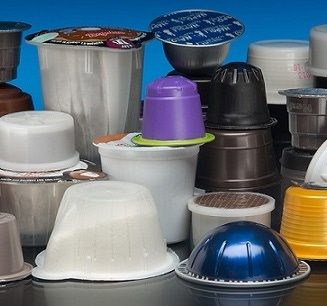November 28, 2017


An excellent example of today’s “have it your way” convenience is represented by the significant growth of individual pods or capsules for coffee and other applications. While the products these cups contain are all over the flavor/strength/type spectrum, they all still need to provide the same attribute—barrier. Without the right barrier attributes, the contents will not meet taste and shelf-life expectations.
A recent research study conducted by Plastic Technologies, Inc. (PTI), a leader in plastic package development, set out to discover exactly what these structures were delivering. The research uncovered significant performance and barrier differences in capsules used for coffee and other applications.
With growing consumer use of capsules and pods for a wide number of beverage and other liquid-based applications, PTI wanted to research the base materials being used, the structures they were assembled into, the resulting barrier—oxygen, water vapor transmission rates—attributes and the impact on taste to produce comprehensive analysis on the package type.
PTI found that that the “barrier improvement factor” varied as much as 380 times across the 18 capsule samples tested. The capsules selected represent most of the major commercially-available systems currently available.
Head to Anaheim, CA, February 6-8, 2018, to explore packaging, plastics and more during WestPack that’s co-located with PLASTEC West in Anaheim, CA. For more information, visit the WestPack website. |
“It’s important to understand, however, that just because a capsule type has a lower barrier, this doesn’t necessarily translate to bad taste,” says PTI President Thierry Fabozzi. “It really comes down to preference, oftentimes determined by specific cultures or geographic areas. Climatic storage conditions may also decrease barrier levels. But what is important is an understanding of how each performs to make sure that target audience criteria are being met in the most cost-effective way possible.”
The other significant finding from the research is the way in which the capsule’s individual structural components are assembled to create the final container also impacts barrier characteristics.
The study included samples from the following brands: Autobar Barista, Bestpresso coffee, Bialetti coffee system, Cafissimo coffee, Dallmayr Capsa, Delizio coffee, Keurig K-Cup, Keurig Rivo coffee, Keurig Vue coffee and milk, Lavazza, Nespresso, Nestle Dolce Gusto coffee and milk, Starbucks Verismo coffee and milk.
Oxygen and water vapor permeation, overall dimensions, minimum wall thickness, 3D scan to determine active barrier surface, identifying the manufacturing process, layer-structure analysis and summary mapping were characteristics reviewed for each coffee capsule type.
You can find more information on the research findings here.
Author: Thierry Fabozzi, president of Plastic Technologies, Inc. (PTI), is responsible for the company’s global operations. Fabozzi has a 30-year track record of significant packaging technology and business development achievements. Before joining PTI, he held positions at Nestlé, Milacron and Tetra Pak.
About Plastic Technologies
Plastic Technologies, Inc. (PTI) is recognized worldwide as a key source for preform and package design, package development, rapid prototyping, pre-production prototyping, and material evaluation engineering for the plastic packaging industry. For more information, visit www.plastictechnologies.com, email [email protected] or phone 419-867-5424.
About the Author(s)
You May Also Like


